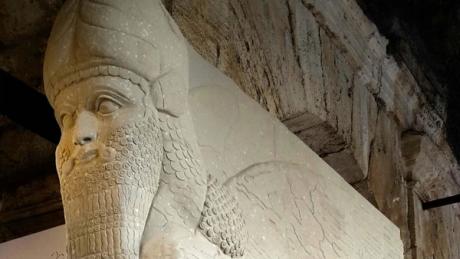Hermit Crab Project
2008 - Photography (Photography)
Charwei Tsai
Charwai Tsai’s photograph documents her Hermit Crab Project installation upon the construction site of gallery Sora in Tokyo. Tsai placed live hermit crabs and shells in a sandy enclosure at the site, writing fragments of The One China policy and the Taiwanese Independence statements on each shell. As the hermit crabs moved and swapped shells, they formed new connections between the statements. Tsai calls attention to the ephemerality of political declarations and makes the movements of animals into metaphors for the changing course of history.
Taiwanese multimedia artist Charwai Tsai often explores geographical, social, and spiritual concerns through performative and ephemeral artworks. She chooses materials that decompose or change to contemplate notions of impermanence and transience. Tsai is also editor-in-chief of “Lovely Daze”, a bi-annual journal of artists’ writings and artworks curated around specific themes for each issue.
Colors:
Related works featuring themes of: » Black-and-White Photography, » Close-Up, » Contemporary Archaeological, » Contemporary Participation, » Taiwanese
» see more

© » KADIST
Tina Modotti
1930The Italian photographer Tina Modotti is known for her documentation of the mural movement in Mexico...

© » KADIST
Tina Modotti
1927Modotti’s Diego Rivera Mural: Billionaires Club; Ministry of Education, Mexico D...

© » KADIST
Pak Sheung Chuen
2017The series Nightmare Wallpapers represents a shift if Chuen’s practice, allowing the artist to immerse himself in an “artistic pilgrimage of self healing” following the failure of the 2014 Umbrella Movement...

© » KADIST
Oscar Munoz
2009In Ante la imagen (Before the Image, 2009) Muñoz continues to explore the power of a photograph to live up to the memory of a specific person...
Other related works, blended automatically
» see more

© » KADIST
Tina Modotti
1930The Italian photographer Tina Modotti is known for her documentation of the mural movement in Mexico...

© » KADIST
Tina Modotti
1927Modotti’s Diego Rivera Mural: Billionaires Club; Ministry of Education, Mexico D...

© » KADIST
Jennifer Locke
2005Choke documents the artist filming a wrestler “choking out” his teammate until he is unconscious...

© » KADIST
Félix González-Torres
1992Behind the simplicity and beauty of this untitled photograph of a brilliantly-colored flowerbed by Félix González-Torres are two remarkable stories of love, loss, and resilience...
Related works sharing similar palette
» see more

© » KADIST
Lenka Clayton and Phillip Andrew Lewis
2022Five Hundred Twenty-Four, a single-channel video installation by Lenka Clayton and Phillip Andrew Lewis, features singers from over twenty Cleveland-area choirs counting numbers in an iterative process: one person sings “one”, then two people sing “two”, and so forth, to 524...

© » THEARTNEWSPER
Italy donates replica of Bull of Nimrud destroyed by Isis to Iraq Art market Museums & heritage Exhibitions Books Podcasts Columns Technology Adventures with Van Gogh Search Search Heritage news Italy donates replica of Bull of Nimrud destroyed by Isis to Iraq The 3D-printed reproduction of the Assyrian statue was previously displayed at the Colosseum in Rome and the Unesco headquarters in Paris James Imam 9 February 2024 Share The replica of the Bull of Nimrud at the Colosseum © Museo Archaeologico del Colosseo Italy has donated a reconstructed Assyrian statue to Iraq in what has been described as a “miracle of Italian cultural diplomacy”...
Related artist(s) to: Charwei Tsai » Heman Chong, » San Francisco, » Shilpa Gupta, » Song Dong, » Aki Sasamoto, » Alexis Destoop, » Asia Society, » Ava Ansari, » Burçak Bingöl, » Ceren Erdem
» see more

© » KADIST
Aki Sasamoto
2012Poetry Light Stool evokes the spirit of Fluxus, the intermedia movement that encouraged artmaking to be simple, fun, and address everyday life...

© » KADIST
Heman Chong
2009With a habit of reading eight to ten books at the same time, Chong paints his two-foot tall novel covers through referencing an extensive reading list (accessible on Facebook) he has kept since 2006...

© » KADIST
Heman Chong
2012The work Calendars is composed of 1001 images of deserted public areas in Singapore printed on pages of a calendar set from the year of 2020 until 2096...

© » KADIST
Shilpa Gupta
2008The three monkeys in Don’t See, Don’t Hear, Don’t Speak are a recurring motif in Gupta’s work and refer to the Japanese pictorial maxim of the “three wise monkeys” in which Mizaru covers his eyes to “see no evil,” Kikazaru covers his ears to “hear no evil,” and Iwazaru covers his mouth to “speak no evil.” For the various performative and photographic works that continue this investigation and critique of the political environment, Gupta stages children and adults holding their own or each other’s eyes, mouths and ears...
Related works found in the same semantic group
» see more

© » KADIST
John Houck
2013Houck’s Peg and John was made as part of a series of photographic works that capture objects from the artist’s childhood...

© » KADIST
Taloi Havini
2015Following her family’s political exile to Australia in 1990, Havini began to document her journey’s home to the north of Buka Island, in the Autonomous Region of Bougainville...

© » KADIST
Majd Abdel Hamid
2019Tadmur by artist Majd Abdel Hamid is influenced by a book by Mustafa Khalifa titled The Shell: Memoirs of a Hidden Observer , which details Khalifa’s imprisonment in the Assad ‘desert prison’ Tadmur...



